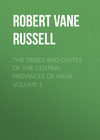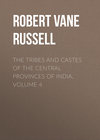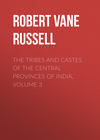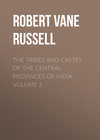Kitabı oku: «The Tribes and Castes of the Central Provinces of India, Volume 1», sayfa 29
7. The dual principle derived from the antagonism of light and darkness
It is noticeable that Ahura Mazda is considered as luminous and good, and Ahrimān as gloomy and bad. Ahura Mazda, according to Darmesteter, can be traced back to Asura, the supreme god of Indo-Iranian times, and is the representative of Varūna, Zeus or Jupiter, that is the sky or heavens. Similarly Ahura Mazda is described in the Zend-Avesta as righteous, brilliant, glorious, the originator of the spirit of nature, of the luminaries and of the self-shining brightness which is in the luminaries. Again he is the author of all that is bright and shining, good and useful in nature, while Ahrimān called into existence all that is dark and apparently noxious. Both are complementary as day and night, and though opposed to each other, are indispensable for the preservation of creation. The beneficent spirit appears in the blazing flame, the presence of the hurtful one is marked by the wood converted into charcoal. Ahura Mazda created the light of day and Ahrimān the darkness of night; the former awakens men to their duties and the latter lulls them to sleep. These features of the good and evil spirits seem to point to the conclusion that the original antithesis which is portrayed in the conflict between the principles of good and evil is that of night and day or darkness and light. The light of day and all that belongs to it is good, and the darkness of night and that which belongs to it evil. As already seen, Ahura Mazda is considered to be equivalent to Varūna or Zeus, that is the god of the sky or heavens. Originally it seems likely that this deity also comprised the sun, but afterwards the sun was specialised, so to speak, into a separate god, perhaps in consequence of a clearer recognition of his distinctive attributes and functions in nature. Thus in the Zoroastrian religion Mithra became the special sun-god, and may be compared with Vishnu and Surya in India and Apollo in Greece. In the Avesta the sun is addressed as the king.360 Ahura Mazda speaks of the sun-deity Mithra as follows to Zoroaster: “I created Mithra, who rules over large fields, to be of the same rank and dignity as I myself am (for purposes of worship).” The only visible emblem of Ahura Mazda worshipped by the Pārsis is fire, and it would seem that the earthly fire, which is called Ahura Mazda’s son, is venerated as the offspring and representative of the heavenly fire or the sun. Thus Ahura Mazda may have been originally an old god of the heavens, and may have become the abstract spirit of light from whom the sun in turn was derived. If, as is now supposed, the original home of the Aryan race was somewhere in northern Europe, whence the Iranian and Indian branches migrated to the east, the religious tenets of the Pārsis may perhaps have arisen from the memory of this journey. Their veneration of fire would be more easily understood if it was based on the fact that they owed their lives to this element during their wanderings across the steppes of eastern Europe. The association of cold, darkness and snow with Ahrimān or the evil one supports this hypothesis. Similarly among the Indian Aryans the god of fire was one of the greatest Vedic gods, and fire was essential to the preservation of life in the cold hilly regions beyond the north-west of India. But in India itself fire is of far less importance and Agiri has fallen into the background in modern Hinduism, except for the domestic reverence of the hearth-fire. But Zoroastrianism has preserved the old form of its religion without change. The narrow bridge which spans the gulf leading to heaven and from which the wicked fall into hell, may have originally been suggested by the steep and narrow passes by which their ancestors must have crossed the mountain ranges lying on their long journey, and where, no doubt, large numbers had miserably perished; while their paradise, as already seen, was the comparatively warm and fertile country to which they had so hardly attained, where they had learnt to grow corn and where they wanted to stay thenceforth and for ever.
8. The Zoroastrians in Persia
In Persia itself the Zoroastrian faith is now almost extinct, but small colonies still survive in the towns of Yezd and Kermān. They are in a miserable and oppressed condition and are subjected to various irritating restrictions, as being forbidden to make wind towers to their houses for coolness, to wear spectacles or to ride horses. In 1904 their number was estimated at 9000 persons.361
9. Their migration to India and settlement there
The migration of the Pārsis to India dates from the Arab conquest of Persia in A.D. 638–641. The refugees at first fled to the hills, and after passing through a period of hardship moved down to the coast and settled in the city of Ormuz. Being again persecuted, a party of them set sail for India and landed in Gujarāt. There were probably two migrations, one immediately after the Arab conquest in 641, and the second from Ormuz as described above in A.D. 750. Their first settlement was at Sanjān in Gujarāt, and from here they spread to various other cities along the coast. During their period of prosperity at Sanjān they would seem to have converted a large section of the Hindu population near Thāna. The first settlers in Gujarāt apparently took to tapping palm trees for toddy, and the Pārsis have ever since been closely connected with the liquor traffic. The Portuguese writer Garcia d’Orta (A.D. 1535) notices a curious class of merchants and shopkeepers, who were called Coaris, that is Gaurs, in Bassein, and Esparis or Pārsis in Cambay. The Portuguese called them Jews; but they were no Jews, for they were uncircumcised and ate pork. Besides they came from Persia and had a curious written character, strange oaths and many foolish superstitions, taking their dead out by a special door and exposing the bodies till they were destroyed. In 1578, at the request of the Emperor Akbar, the Pārsis sent learned priests to explain to him the Zoroastrian faith. They found Akbar a ready listener and taught him their peculiar rites and ceremonies. Akbar issued orders that the sacred fire should be made over to the charge of Abul Fazl, and that after the manner of the kings of Persia, in whose temples blazed perpetual fires, Abul Fazl should take care that the sacred fire was never allowed to go out either by night or day, for that it was one of the signs of god and one light from among the many lights of his creation. Akbar, according to Portuguese accounts, was invested with the sacred shirt and girdle, and in return granted the Gujarāt priest Meherji Rāna an estate near Naosari, where his descendants have ever since been chief priests.362
10. Their wealth and prosperity
The Pārsis had begun to settle in Bombay under the Portuguese (A.D. 1530–1666). One of them, Dorābji Nānābhai, held a high position in the island before its transfer to the British in the latter year, and before the end of the seventeenth century several more families, of whom the Modis, Pāndes, Banājis, Dādiseths and Vādias were among the earliest, settled in the island. To the Gujarāt Pārsis more than to any class of native merchants was due the development of the trade of Bombay, especially with China. Though many Pārsis came to Bombay, almost all continued to consider Surat or Naosāri their home; and after its transfer to the British in 1759 the Surat Pārsis rose greatly in wealth and position. They became the chief merchants of Surat, and their leading men were the English, Portuguese and Dutch brokers. Shortly afterwards, owing to the great development of the opium and cotton trade with China, the Pārsis made large profits in commerce both at Surat and Bombay. After the great fire at Surat in 1857 Bombay became the headquarters of the Parsis, and since then has had as permanent settlers the largest section of the community. The bulk of the native foreign trade fell into their hands, and the very great liberality of some of the leading Pārsis has made their name honourable. They secured a large share of the wealth that was poured into western India by the American War and the making of railways, and have played a leading part in starting and developing the great factory industry of Bombay. Many of the largest and best managed mills belong to Pārsis, and numbers of them find highly paid employment as mechanical engineers, and weaving, carding and spinning masters. Broach ranks next to Bombay in the prosperity of its Pārsis; they deal extensively in cotton, timber, fuel and the manufacture of spirit from the flowers of the mahua tree.363 From the Bombay Presidency the Pārsis have spread to other parts of India, following the same avocations; they are liquor and timber contractors, own and manage weaving mills and ginning factories, and keep shops for retailing European stores, and are the most prosperous and enterprising section of the native population. Two Pārsis have become members of Parliament, and others have risen to distinction in Government service, business and the professions. The sea-face road in Bombay in the evening, thronged with the carriages and motor-cars of Pārsi men and ladies, is strong testimony to the success which the ability and industry of this race have achieved under the encouragement of peace, the protection of property and the liberty to trade. Though they have a common Aryan ancestry and their religion is so closely connected with Hinduism, the Pārsis feel themselves a race alien to the Hindus and probably have no great sympathy with them. Their wealth and position have been mainly obtained under British rule, and the bulk of them are believed to be its warm adherents. The Pārsis now make no proselytes, and no regular provision exists for admitting outsiders to their religion, though it is believed that, in one or two cases, wives taken from outside the community have been admitted. They object strongly to the adoption of any other religion, such as Christianity, by members of their body. The Pārsis are notable for the fact that their women are very well educated and appear quite freely in society. This is a comparatively recent reform and may be ascribed to the English example, though the credit they deserve for having broken through prejudice and tradition is in no way diminished on that account. The total number of Pārsis in India in 1911 was just 100,000 persons.
11. Marriage customs
Polygamy among the Pārsis has been forbidden by the Pārsi Marriage and Divorce Act of 1865. The remarriage of widows is allowed but is celebrated at midnight. If a bachelor is to marry a widow, he first goes through a sham rite with the branch of a tree, as among the Hindus. Similarly before the wedding the bride and bridegroom are rubbed with turmeric, and for the ceremony a marriage-shed is erected. At a feast before the wedding one of the women beats a copper dish and asks the ancestral spirits to attend, calling them by name. Another woman comes running in, barking like a dog. The women drive her away, and with fun and laughing eat all the things they can lay their hands on. Prior to the rite the bride and bridegroom are purified in the same manner as when invested with the sacred shirt and cord. The bridegroom wears a long white robe reaching to his ankles and a white sash round his waist; he has a garland of flowers round his neck, a red mark on his forehead, and carries a bunch of flowers and a cocoanut in his right hand. At every street corner on his way to the bride’s home a cocoanut is waved round his head, broken and thrown away. He sets his right foot in the house first, and as he enters rice and water are thrown under his feet and an egg and cocoanut are broken. At the wedding the couple throw rice on each other, and it is supposed that whoever is quickest in throwing the rice will rule the other. They are then seated side by side, and two priests stand before them with a witness on each side, holding brass plates full of rice. The two priests pronounce the marriage blessing in old Persian and Sanskrit, at each sentence throwing rice on the bride’s and bridegroom’s heads. At intervals in the midst of the blessing the bridegroom and bride are asked in Persian, ‘Have you chosen her?’ and ‘Have you chosen him?’ They answer in Persian, or if they are too young their mothers answer for them, ‘I have chosen.’364
12. Religion. Worship of fire
The religious ritual of the Pārsis consists of the worship of fire. The fire temples are of a single storey and contain three rooms. On reaching the outer hall the worshipper washes his face, hands and feet, and recites a prayer. Then, carrying a piece of sandalwood and some money for the officiating priest, he passes to the inner hall, in which a carpet is spread. He takes off his shoes and rings one of four brass bells hanging at the corners of the room. The priest also rings one of these bells at each watch when he performs worship. He then proceeds to the threshold of the central fire-room, kneels there, and again standing begins to recite prayers. None may enter the fire-room except the priests. Here the fire is kept always blazing in a silver or copper urn on a solid stone pedestal, and is fed day and night with sandal and other commoner woods. A priest is always present, dressed in long white robes, his hands covered with white cloths and his face veiled. The worshipper lays down his offering of sandalwood at the entrance, and the priest takes it up with a pair of tongs, and gives him some ashes from the urn in a silver or brass ladle. These the worshipper rubs on his forehead and eyebrows. On concluding his prayers, which are in the Avesta language, he walks backward to where he left his shoes and goes home. A Pārsi man never allows his hearth fire to go out, and if he changes his residence he carries it with him to the next place of abode.
13. The Homa liquor
Like the Hindus, the Iranian ancestors of the Pārsis revered the sacred liquor made from the Soma or Homa plant. It was considered a panacea for all diseases, and many stories about the miraculous effects obtained from drinking the juice are contained in a hymn of the Zend-Avesta composed in its honour. According to Dr. Mitchell365 the offering of Homa is still made at Pārsi temples, though apparently some substitute must have been obtained for the original plant, which does not grow in the plains of India. At any rate the offering and sacrificial drinking of the liquor were probably continued so long as the Pārsis remained in Persia. As this is a comparatively cool country, the bad effects of alcohol did not perhaps become apparent to the Pārsis as they did to the Hindus in the plains of India, and hence the sanctity attaching to the liquor underwent no similar decline. From this it perhaps results that the Pārsis have no feeling at all against alcohol, and drink it for pleasure, like Europeans. Both the toddy of the date-palm and mahua spirit are freely consumed at their feasts, while the rich members of the community drink European wines and spirits. As any dealing in alcohol is practically prohibited to high-caste Hindus and also to Muhammadans, and low-caste Hindus have hitherto scarcely ever been literate, the Pārsis on account of this peculiarity have found a profitable opening in the wholesale liquor trade, and until recently have had very little effective competition to face. This is perhaps a reason for their special addiction to it, and also for their engaging in the sale of European stores and wines.
14. Pārsi priests
The Pārsi priests form a hereditary caste, and are all supposed to be descended from one Shāpur Sheheriār, who with his sons and grandsons, one of whom translated the Zend-Avesta into Sanskrit, are believed to have been among the first Pārsi settlers of the priestly caste at Sanjān in north Thāna. The training of a priest consists of learning substantial portions of the Zend-Avesta by heart, and in going through elaborate ceremonies of purification, in which the drinking of nerang and nerangdin, or cow’s and bull’s urine, being bathed, chewing pomegranate leaves and rubbing the same urine and sand on his body are leading features. Priests always dress in white and wear a full beard. They must never shave the head or face, and never allow the head to be bare nor wear coloured clothes. If a priest’s turban happens to fall off, or if he travels by rail or sea, his state of purity ends, and he must go through the whole ceremony of purification again and pass nine days in retreat at a temple.366 The principal business of a priest, as already seen, is the tending of the sacred fire in the temples, and he also conducts marriage and other ceremonies.
15. The sacred shirt and cord
Pārsi boys and girls are received into the Zoroastrian faith between the ages of seven and nine. The child is purified by being bathed, sipping bull’s urine and chewing a pomegranate leaf, and makes the profession of belief in the faith. He or she is then invested with the sacred shirt, sadra, and the sacred cord or thread called kusti. The shirt is of thin muslin, with short sleeves and falling a little below the hip. The sacred cord is of wool, and can be made only by the wives and daughters of Pārsi priests.367
16. Disposal of the dead
The Pārsi method of exposing the dead in Dakhmas or towers of silence to be devoured by vultures has often been described. It has objectionable features, and the smaller communities in the interior of India do not as a rule erect towers of silence, and are content simply to bury the dead. It seems probable that the original custom was simply to expose the dead on waste land, the towers of silence being a substitute which became necessary when the Pārsis began to live in towns. This hypothesis would explain some points in their funeral customs recorded in the Bombay Gazetteer. The dead body is washed, dressed in an old clean cloth and laid on the floor of the house, the space being marked off. If the floor is of earth the surface of this enclosed space is broken up. If the floor is of cement or stone one or two stone slabs are set on it and the body laid on them; it is never laid on a wooden floor, nor on stone slabs placed on such a floor. The space where the body was laid is marked off, and is not used for a month if the death occurs between the eighth and twelfth months of the year, and for ten days if the death occurs between the first and seventh months. The last are said to be the hottest months.368 It would appear that these rules are a reminiscence of the time when the body was simply exposed. It was then naturally always laid on earth or rock, and never on wood, hence the prohibition of a wooden floor. The fact that the spot where the body is now laid in the house is held impure for a shorter period during the summer months may be explained on the ground that all traces of the decaying corpse, after it had been devoured by wild animals and vultures, would have been dried up by the sun more quickly at this time than during the winter months. In the latter period, as the process would take longer, the place in the home is similarly held impure for a month, as against ten days in summer, though at present neither the sun nor weather can possibly affect a site inside the house. The fact that when the floor is of earth the site for the corpse is broken up may indicate that it was formerly laid on rough waste ground, and not on a floor beaten smooth, though it might also be simply a means of avoiding contamination of the floor. But if this was the object it would be simpler to avoid letting the body come into contact with the floor at all. The corpse may still be wrapped in an old cloth because it was originally exposed in the cloth worn at death. The body is carried to the tower on an iron bier by special bearers; if the journey is a long one a bullock cart may be used, but in this case the cart must be broken up and the pieces buried near the tower. Before the funeral starts a number of priests attend at the house and recite the prayers for the dead. During the service a dog is brought in to look on the face of the dead. The mourners follow in the usual manner, and on arrival at the tower the bearers alone take the corpse inside and lay it naked on one of the slabs, which are built in circular terraces in the interior. The mourners must be purified at the tower by pouring a little cow’s urine into their hands, and on returning home they wash their face and hands, and recite a prayer before entering the house. They must bathe and have their clothes washed before these are again used. When a married man dies his widow breaks her glass bangles and wears only metal bracelets, and so long as she remains a widow she takes no part in any festal celebrations. Every morning for three days after a death rice is cooked and laid in the veranda for dogs to eat. No other food is cooked in the house of death, the family being supplied by their friends. During these three days prayers are said for the dead several times a day by priests, and kinsmen pay short visits of condolence. On the third day a meeting is held in the house and prayers are said for the dead; trays of flowers and burning incense are placed before the spot where the body lay, and a list of charitable gifts made by the family in memory of the dead man is read. On the fourth day a feast is held specially for priests, and friends are also asked to join in it. A little of the food cooked on this day is sent to all relations and friends, who make a point of eating or at least of tasting it. On the tenth and thirtieth days after death, and on monthly anniversaries for the first year, and subsequently on annual anniversaries, ceremonies in honour of the dead are performed.369



